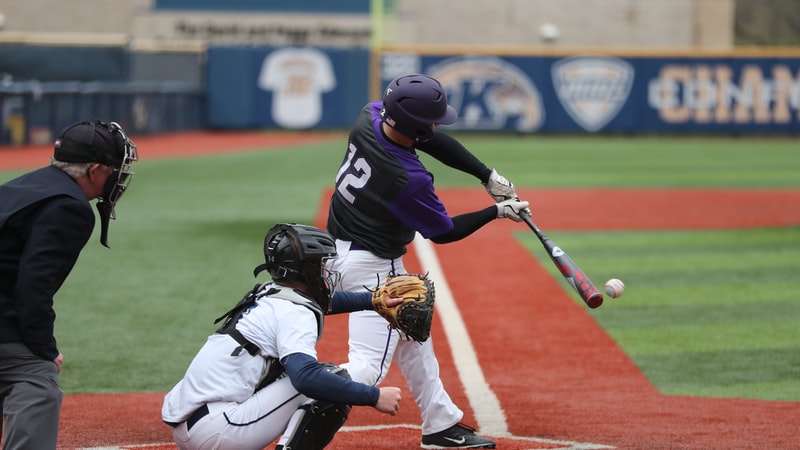Catching a baseball is a fundamental skill in the game of baseball. Whether you’re a professional athlete or a casual player, being able to catch the ball cleanly and without pain is crucial for success on the field.
The impact of a high-speed baseball can be quite forceful, making it essential to learn proper techniques to protect yourself from injury.
We will explore various strategies and tips to help you catch a baseball without it hurting. From choosing the right glove to maintaining correct hand positioning, from moving your hand back to reducing the impact to keeping visual contact with the ball, we will cover all the necessary aspects of a successful catch.
Additionally, we will delve into specific situations like catching low and high balls, diving, and skimming along the ground.
How To Catch A Baseball Without It Hurting?
There are some effective techniques you can follow to catch a baseball without hurting your palms and here. I’ve listed all the techniques right below.
1. Choosing the Right Glove
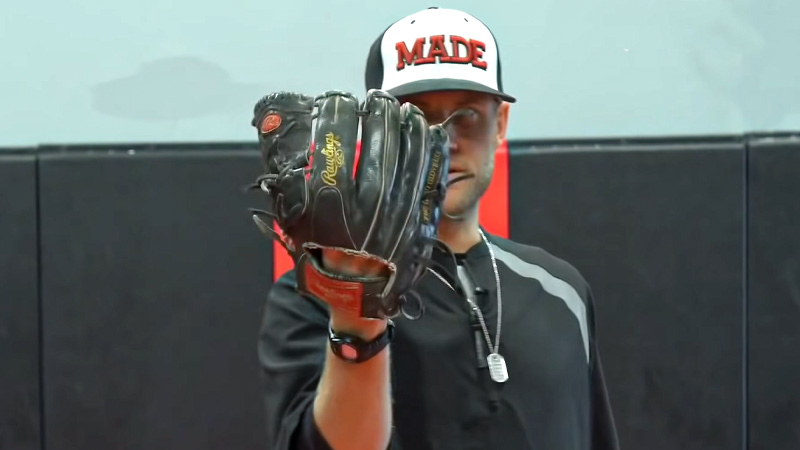
One of the first things to consider when selecting a baseball glove is the size. Choosing a glove that fits properly is crucial for comfortable and effective catching.
A glove that is too small can be uncomfortable and restrict your hand movements, while a glove that is too big may not provide a secure grip on the ball.
To determine the right size, measure the circumference of your hand just above the thumb. This measurement will help you find the appropriate glove size, usually indicated in inches.
Keep in mind that glove sizes can vary between brands, so it’s essential to try on different gloves to find the best fit for your hand.
When it comes to materials, baseball gloves are typically made of leather or synthetic materials. Leather gloves offer durability, flexibility, and a traditional feel.
They require a break-in period to soften the leather and mold it to your hand shape. Synthetic gloves, on the other hand, are often more affordable and require less break-in time.
They are also more resistant to moisture and can be easier to maintain.
Additionally, the design of the glove is an important consideration. Different positions on the baseball field require specific glove designs to accommodate the demands of the position.
2. Correct Hand Positioning
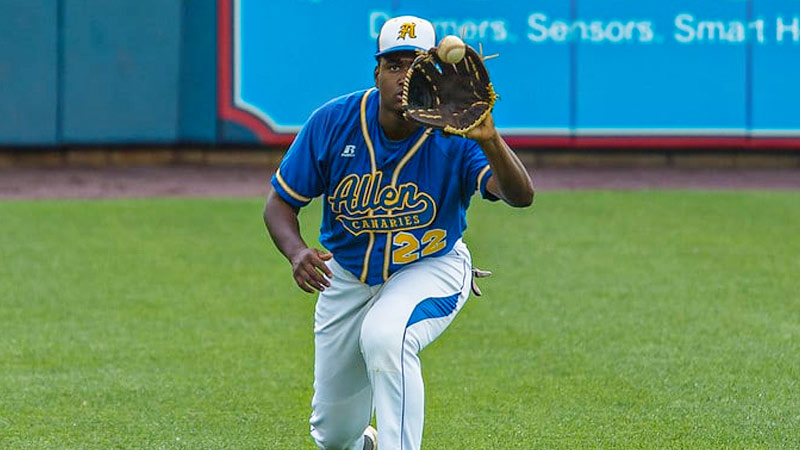
Source: baseballtrainingworld.com
When catching a baseball, it’s essential to aim to catch the ball in the palm of your glove. The palm is the strongest part of your hand and provides better cushioning to absorb the impact of the ball.
By catching the ball in the palm, you can minimize the risk of the ball stinging or hurting your hand.
To achieve this, position your glove with the palm facing toward the approaching ball. As the ball comes towards you, keep your glove open and extended, allowing the ball to settle into the palm. This technique ensures that the ball is securely caught and reduces the chances of it slipping out.
While it may be tempting to catch the ball in the webbing or fingers of the glove, this can lead to discomfort and potential injuries. The webbing and fingers are more delicate and less able to absorb the impact of the ball.
To avoid catching in the webbing or fingers, focus on keeping your fingers relaxed and slightly spread apart within the glove. This allows the ball to settle into the palm while keeping your fingers protected.
3. Moving Your Hand Back
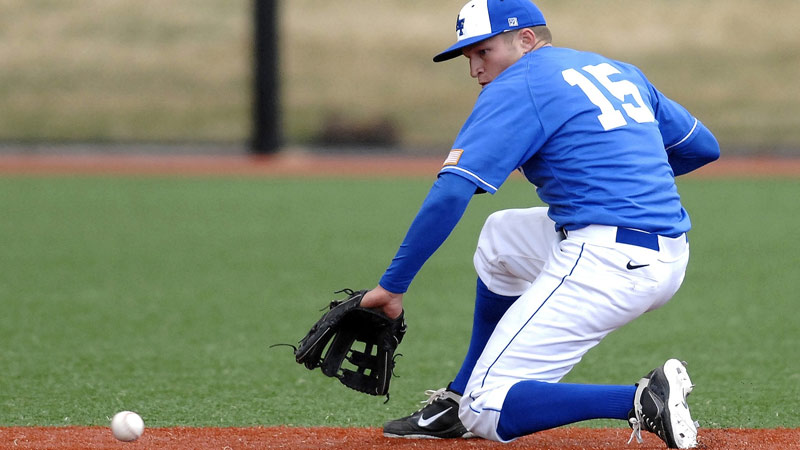
Source: probaseballinsider.com
When catching a baseball, the way you position your hand can significantly impact the force of the ball’s impact. By moving your hand slightly back upon catching, you can effectively reduce the force and minimize any potential discomfort or pain.
The concept behind moving your hand back is to create a cushioning effect. As the ball makes contact with your glove, the slight backward movement allows your hand to absorb some of the force and distribute it more evenly across your hand and arm. This helps to lessen the impact on your hand, fingers, and wrist.
Techniques to Move Your Hand Slightly Back While Catching
There are a few techniques you can employ to move your hand slightly back while catching a baseball:
- Timing and anticipation: Anticipate the trajectory of the ball and position your hand slightly back before it reaches your glove. By being aware of the ball’s speed and direction, you can time your catch and adjust your hand position accordingly.
- Softening your hand: Keep your hand relaxed and flexible, allowing it to move naturally upon catching. Avoid having a rigid grip on the glove, as it limits your ability to move your hand back smoothly.
- Wrist flick: As the ball enters your glove, use a quick and controlled flick of your wrist to move your hand slightly back. This flicking motion adds a backward movement to your hand, reducing the force of the impact.
Remember, the aim is to create a subtle backward movement that cushions the ball’s impact, rather than an exaggerated motion that may disrupt your catching technique.
Practice these techniques during training sessions to develop muscle memory and improve your ability to move your hand back instinctively.
4. Maintaining Visual Contact With the Ball
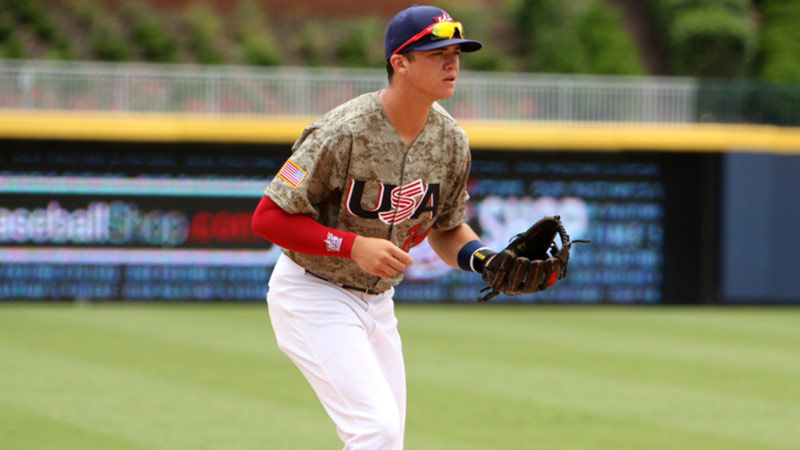
Source: littleleague.org
When playing baseball, it is crucial to maintain visual contact with the ball throughout its trajectory. Keeping your eyes on the ball allows you to accurately judge its speed, direction, and distance, enabling you to position yourself correctly and make a successful catch.
By tracking the ball’s trajectory, you can anticipate its movement and react accordingly, enhancing your chances of catching it without experiencing any discomfort or pain.
Strategies for Keeping Your Eyes on the Ball
- Focus on the ball: From the moment the ball leaves the pitcher’s hand or is hit by a batter, keep your eyes locked on it. Maintain a clear focus on the ball as it travels towards you, tracking its movement in the air.
- Anticipate its path: Use your experience and knowledge of the game to anticipate where the ball is likely to land. By predicting its trajectory, you can adjust your position and prepare yourself to make the catch.
- Use peripheral vision: While focusing on the ball, also utilize your peripheral vision to be aware of your surroundings. This allows you to maintain spatial awareness and avoid potential collisions with other players or obstacles.
- Minimize distractions: Concentrate solely on the ball and block out any distractions around you. By staying focused and eliminating external influences, you can keep your attention solely on the task of tracking the ball.
- Practice eye exercises: Improve your eye coordination and tracking skills by practicing specific eye exercises. These exercises can include following the movement of a small object or tracking multiple objects simultaneously.
Remember, maintaining visual contact with the ball is not only important for catching it effectively but also for your safety and the safety of others on the field.
By implementing these strategies and dedicating time to practice, you can enhance your ability to keep your eyes on the ball and enjoy playing baseball without experiencing any discomfort or pain.
5. Staying Low and Balanced
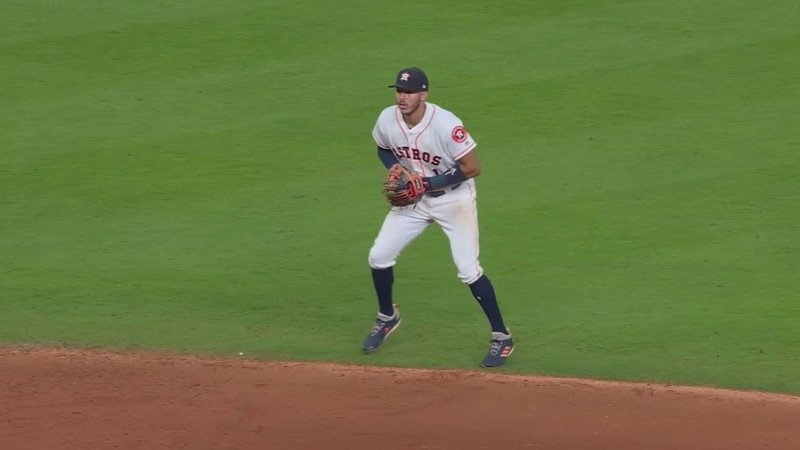
Here are some techniques for maintaining a low stance:
- Bend your knees: One of the key aspects of staying low while catching a baseball is to bend your knees. This lowers your center of gravity, providing stability and making it easier to react quickly to the ball. Keep your knees flexed throughout the catch to maintain a strong and balanced position.
- Athletic stance: Assume an athletic stance with your feet shoulder-width apart. This stance allows for better stability and agility, enabling you to move swiftly in any direction. Keep your weight evenly distributed on both feet to maintain balance.
- Glove positioning: Position your glove slightly below waist level, with your arm extended outward. This allows you to react quickly to low-line drives or ground balls while maintaining a low posture.
- Stay light on your feet: Avoid being flat-footed by staying light on your feet. This means being ready to move at any moment. Shift your weight from one foot to the other, staying agile and prepared to adjust your position as needed.
Maintaining balance while catching a baseball enhances your stability on the field. It allows you to react quickly and make accurate movements, reducing the risk of stumbling or falling during the catch.
Balance is closely linked to coordination. When you are balanced, your body is in control, and you can coordinate your movements effectively. This is essential for making precise catches and reacting to the ball’s trajectory.
Regularly incorporate drills and exercises that focus on these aspects to develop your skills and enhance your overall performance on the field.
6. Special Situations: Low and High Balls
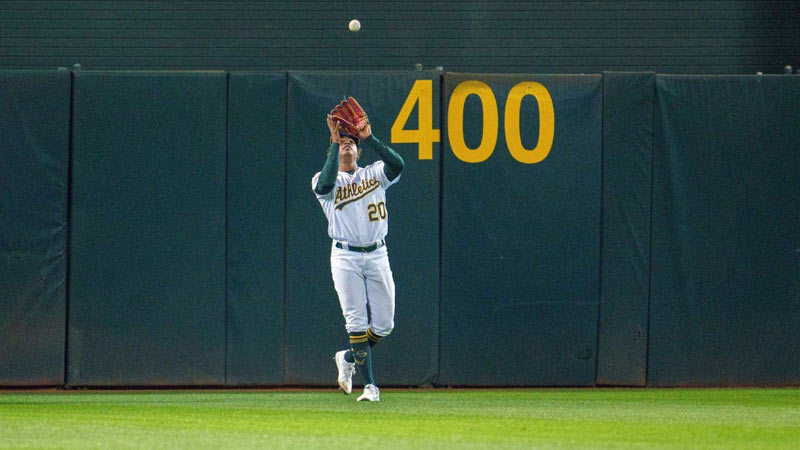
Source: espn.in
Here are the strategies for catching low and hard balls:
- React quickly: When faced with a low and hard-hit ball, it’s crucial to react quickly. Keep your eyes on the ball and anticipate its trajectory. Stay low by bending your knees and getting your glove down to the ground as you move toward the ball.
- Use two hands: When catching a low ball, it’s recommended to use two hands instead of relying solely on your glove. This provides added stability and control during the catch. Extend your non-glove hand out in front of you to assist in securing the ball.
- Slide or dive if necessary: In some cases, a low ball may require you to slide or dive to make the catch. Practice these techniques to develop the ability to slide or dive smoothly while keeping your eye on the ball. Remember to protect your body and avoid any collisions with other players or obstacles.
Techniques for Catching Balls Over Your Head
- Turn and track: As soon as you realize the ball is going over your head, quickly turn and track its flight. Keep your eyes on the ball and move toward its projected landing spot. Adjust your speed and angle as needed to position yourself correctly.
- Time your jump: Timing is crucial when catching high balls. Jump at the right moment to meet the ball at its highest point. This will give you the best chance of making the catch cleanly and avoiding potential collisions with the outfield wall or other players.
- Extend your arm: Fully extend your glove arm when reaching for a high ball. This will maximize your reach and increase the likelihood of successfully catching the ball. Keep your eye on the ball throughout the catch to maintain control.
- Land softly: Once you secure the ball, focus on landing softly to minimize the impact. Keep your body relaxed and absorb the landing with bent knees. This will help reduce the risk of injury and allow you to quickly transition into a throwing motion if necessary.
By practicing these strategies and techniques for catching low and high balls, you’ll develop the skills and confidence needed to handle challenging situations on the field.
Remember to prioritize safety and always be aware of your surroundings to avoid potential collisions or injuries.
7. Diving and Skimming Along the Ground
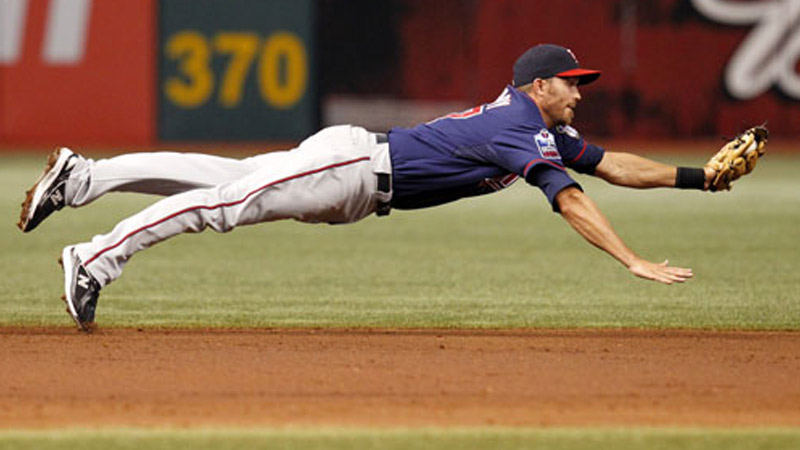
Source: baseballbytheyard.blogspot.com
When it comes to diving for a baseball, using proper techniques is essential to minimize the impact on your body. Here are some guidelines to follow:
- Assess the situation: Before diving, assess the trajectory and speed of the ball. Make sure diving is the best option and that it will allow you to reach the ball effectively. Avoid unnecessary dives when the ball is within reach while standing or running.
- Position your body: As you approach the diving spot, position your body in a low stance with your knees slightly bent. This will help you launch into the dive smoothly and provide a stable base for landing.
- Extend your arms: Reach out with your glove hand and extend your arm fully toward the direction of the ball. Keep your other arm tucked close to your body for balance and to protect yourself during the dive.
- Dive forward and sideways: When diving, aim to dive forward and sideways rather than straight down. This will help you maintain momentum and control while minimizing the impact on your body.
- Roll and protect: As you land and slide after the dive, roll onto your side or back to distribute the impact and protect yourself from injuries. Avoid landing on your stomach or head, as this can lead to discomfort or more serious consequences.
Skimming along the ground allows you to recover quickly and get back on your feet. By maintaining contact with the ground, you can regain your balance and start moving toward the ball or the appropriate base.
When you skim along the ground, you stay closer to the ball’s trajectory. This enables you to make a faster retrieval or make another play if needed, such as throwing to a base to catch a runner off guard.
You should always prioritize safety and be mindful of your surroundings when performing these actions.
Why Practice and Skill Development Is Important?
Regular practice is crucial for improving your catching skills in baseball. Here are a few reasons why consistent practice is essential:
- Muscle memory: Repetition through practice helps develop muscle memory. By consistently performing catching drills and exercises, you train your body to react instinctively and position itself correctly to catch the ball.
- Hand-eye coordination: Catching a baseball requires precise hand-eye coordination. Regular practice enhances this coordination, allowing you to track the ball accurately and make successful catches.
- Timing and reflexes: Practicing catching drills helps improve your timing and reflexes. By repeatedly reacting to different ball trajectories and speeds, you train your body to anticipate and react quickly, increasing your chances of making successful catches.
- Confidence and consistency: Consistent practice builds confidence in your catching abilities. As you become more proficient in catching, your confidence grows, leading to more consistent performances during games.
Exercises and Drills to Improve Catching Skills
To improve your catching skills, incorporate the following exercises and drills into your practice routine:
- Wall Ball Drill: Stand facing a wall and throw a tennis ball or rubber ball against it. As it rebounds, practice catching it with your glove hand. Vary the speed and angle of your throws to simulate different game scenarios and challenge your catching abilities.
- Soft Toss Drill: Have a partner stand a short distance away and softly toss balls to you. Practice catching the balls with your glove hand, focusing on proper hand positioning and technique. Gradually increase the difficulty by adjusting the height and speed of the tosses.
- Pop-Up Drill: Have a coach or teammate hit pop-up fly balls using a pitching machine or by hand. Practice tracking the ball’s trajectory, positioning yourself under it, and making successful catches. Start with easier pop-ups and gradually progress to higher and more challenging ones.
- Reaction Drill: Stand in a ready position while a coach or teammate rapidly throws balls in different directions. React quickly and catch the balls as they come toward you. This drill improves your reflexes and helps you develop quick reaction times.
- Fielding Drill: Incorporate fielding drills that involve catching ground balls and line drives. Practice moving laterally, getting into a proper fielding position, and making clean catches. This will enhance your overall fielding skills and improve your ability to make catches in various game situations.
FAQs
What should I do if the ball is coming towards me at a high speed?
When a ball is coming at you fast, it’s important to maintain your composure. Keep your eyes on the ball and position your glove in front of your body.
Try to absorb the impact by slightly giving with the catch, moving your hand back, and keeping your body balanced.
How do I improve my hand-eye coordination for catching a baseball?
Improving hand-eye coordination takes practice. One way to enhance this skill is by participating in drills that involve tracking and catching small objects like tennis balls or using a reaction ball.
These exercises can help sharpen your reflexes and improve your ability to track the ball accurately.
What should I do if I am having trouble judging the trajectory of a fly ball?
Judging the trajectory of a fly ball can be challenging, especially if it’s hit high in the air. One helpful technique is to focus on the flight of the ball from the moment it leaves the bat.
Position yourself under the ball and track it visually as it descends. Regular practice and experience will also improve your ability to judge fly balls more accurately.
Is it better to catch a baseball with one hand or two hands?
Generally, it is recommended to catch a baseball with two hands whenever possible. This provides better stability and control when making the catch. However, there may be situations where using one hand is necessary, such as reaching for a ball that is out of reach.
In such cases, make sure to extend your arm fully and use proper hand positioning to secure the catch.
How can I prevent injuries while diving for a baseball?
Diving for a baseball can be an effective technique to make a catch, but it’s important to do it safely. Practice proper diving techniques, such as leading with your glove hand and keeping your body low to the ground.
Also, be mindful of the playing surface to avoid injuries from the impact. Additionally, ensure you are wearing appropriate protective gear, such as knee pads or sliding shorts, to minimize the risk of abrasions or bruises.
Conclusion
learning how to catch a baseball without it hurting is essential for any player’s success and safety on the field. By following the proper techniques and strategies discussed in this guide, you can significantly reduce the risk of injury and improve your overall catching skills.
Choosing the right glove that fits well and suits your needs, maintaining correct hand positioning, moving your hand back to absorb impact, and keeping visual contact with the ball are all crucial aspects of a successful catch.
Remember, regular practice and skill development are key. Consistent training, incorporating exercises and drills specific to catching, will help you refine your technique and build muscle memory. Best of Luck.

